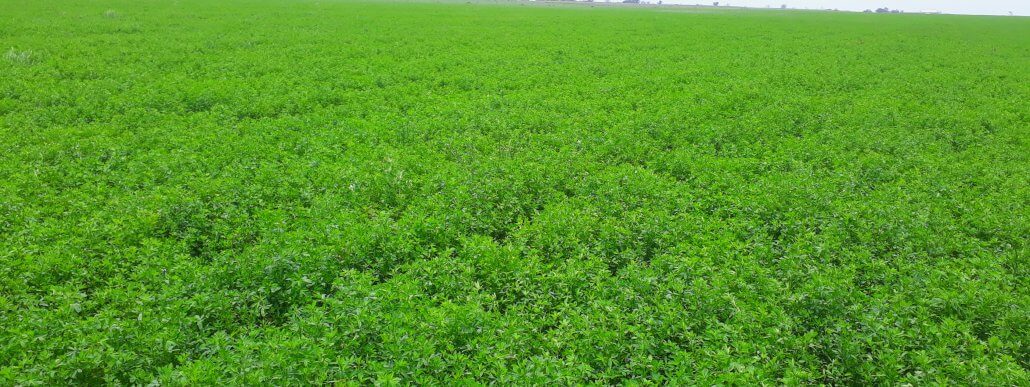Nitrogen is one of the most important plant nutrients. It is also the most abundant in the environment – in both the air and soil. This nutrient, in its pure material form, makes up 78% of our air – that’s right, there is far more nitrogen in the air than the oxygen we need to breathe.
Nitrogen makes a molecule with itself and creates a very strongly bonded pair of atoms, this is N2 gas. This bond isn’t easy to break apart, and plants can’t use nitrogen in this form. In order to use it, plants need help to break up the nitrogen and change (fix), it into a different form. This is called nitrogen fixation
Nitrogen fixation
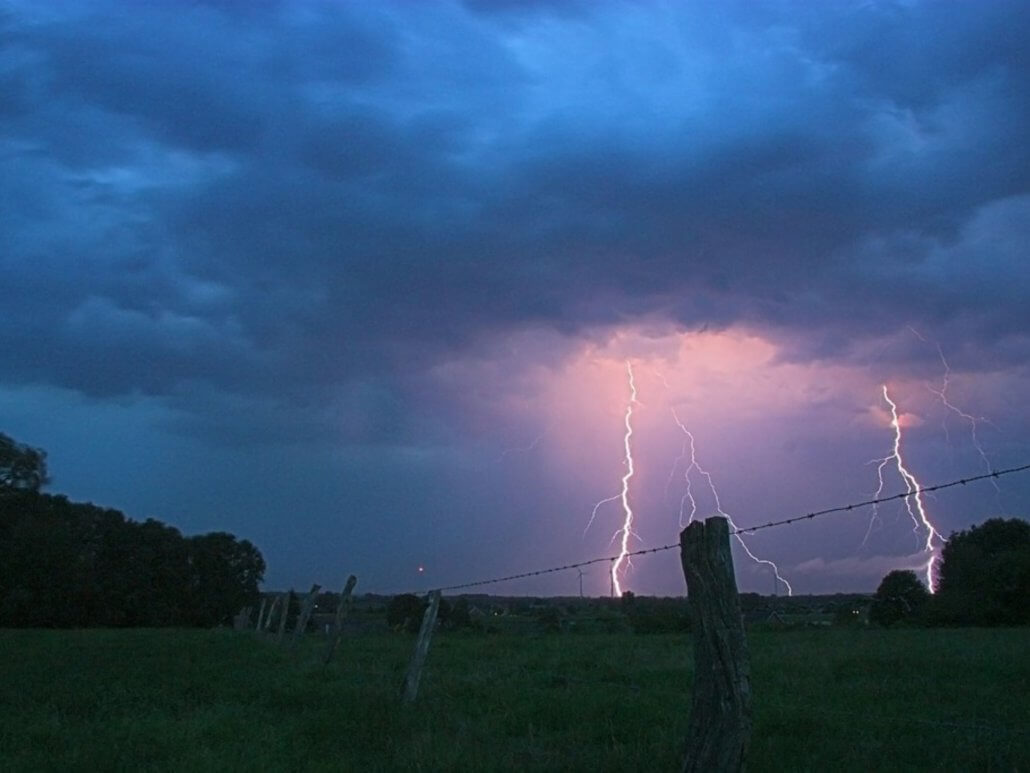
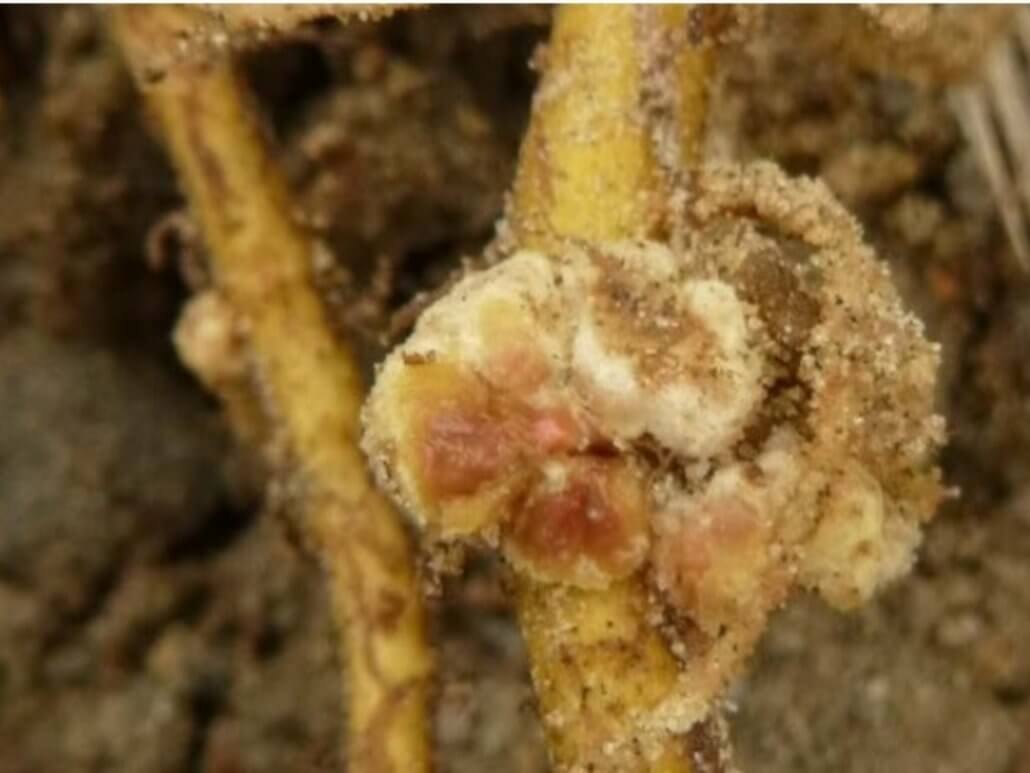
Nitrogen fixation from lightning and bacteria
Two forms of nitrogen fixation occur – atmospheric and biological N fixation. Atmospheric N fixation is the process whereby lightning converts N2 gas in the atmosphere into nitrogen that can be used by the soil organisms. Lightning deposits this inorganic N directly into the soil. Biological N fixation (BNF), on the other hand, is performed by a specialised group of bacteria. They fix N2 gas in their bodies, making it available for the plant. This blog will be exploring the mechanism behind BNF and what affects its occurrence.
Biological N fixation
There are two kinds of bacteria that are responsible for BNF. The first are free living fixers, such as cyanobacteria (aka blue-green algae), and the second are the symbiotic N fixers, such as rhizobium. The free living bacteria don’t need a host to fix N, whereas the symbiotic bacteria require a host, specifically a leguminous host. This blog will only focus on the symbiotic BNF, and will explore the process of how the symbiotic bacteria establish the relationship with the host plant.
Legumes, the host
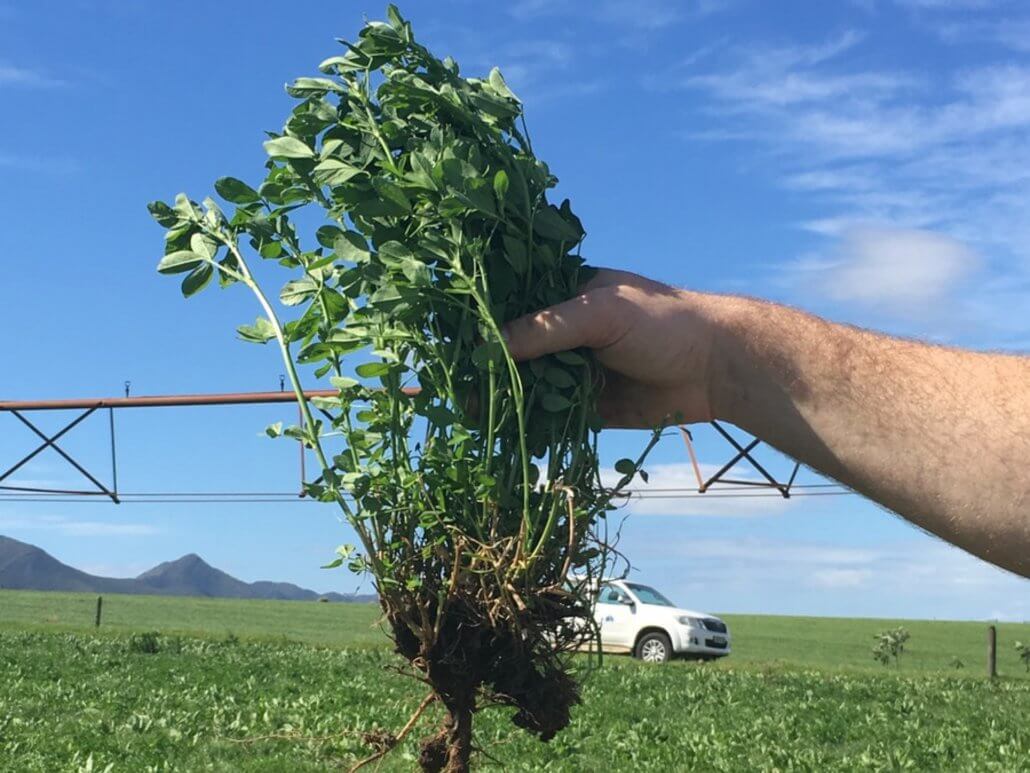
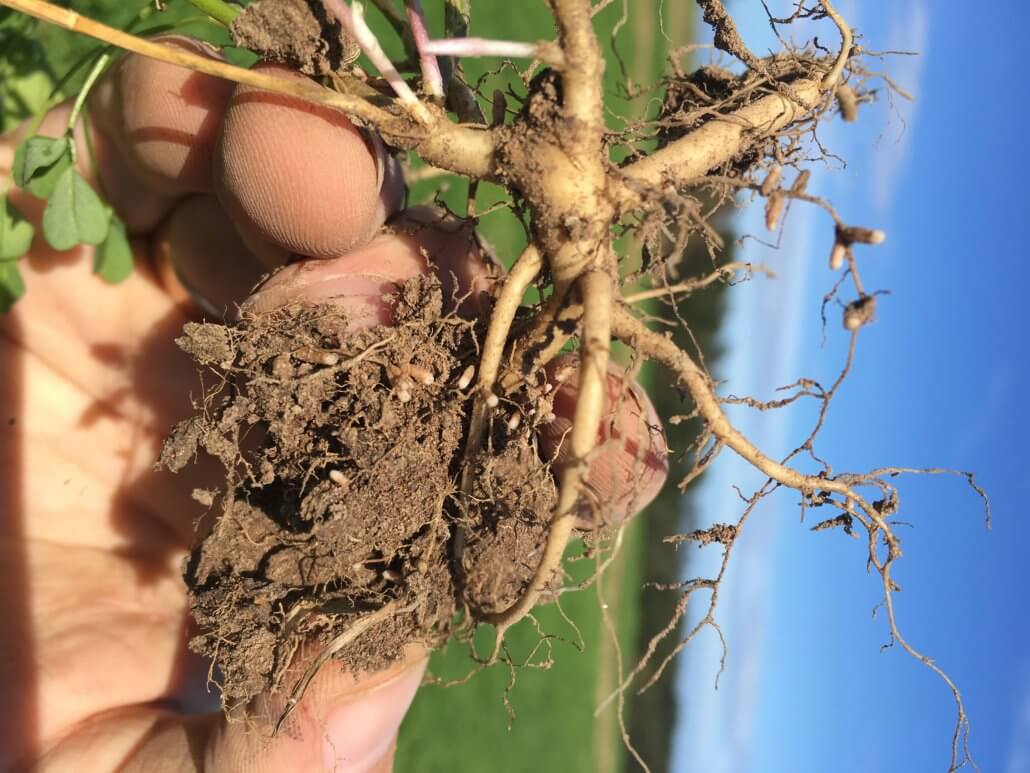
Lucerne pasture, one of the leguminous hosts
Legumes are able to host N fixing bacteria through a trade agreement. The plant will exchange carbon (sugars) with the bacteria and get nitrogen in return. The trade centre where all of this occurs is called the root nodule. The nodule is established once the bacteria have made contact with the plant root.
The formation of the trade centre, aka the nodules
The formation starts with the plant root releasing nutrients that attract rhizobia and other bacteria. These nutrients are root exudates, the soil’s equivalent of a chocolate cake. Once the bacteria has been successfully lured, it will not just immediately give up the nitrogen, it will first require protection by asking the plant to shield it, this is when the nodulation begins. The root will start to curl around the rhizobium and thus forming what we see as nodules.
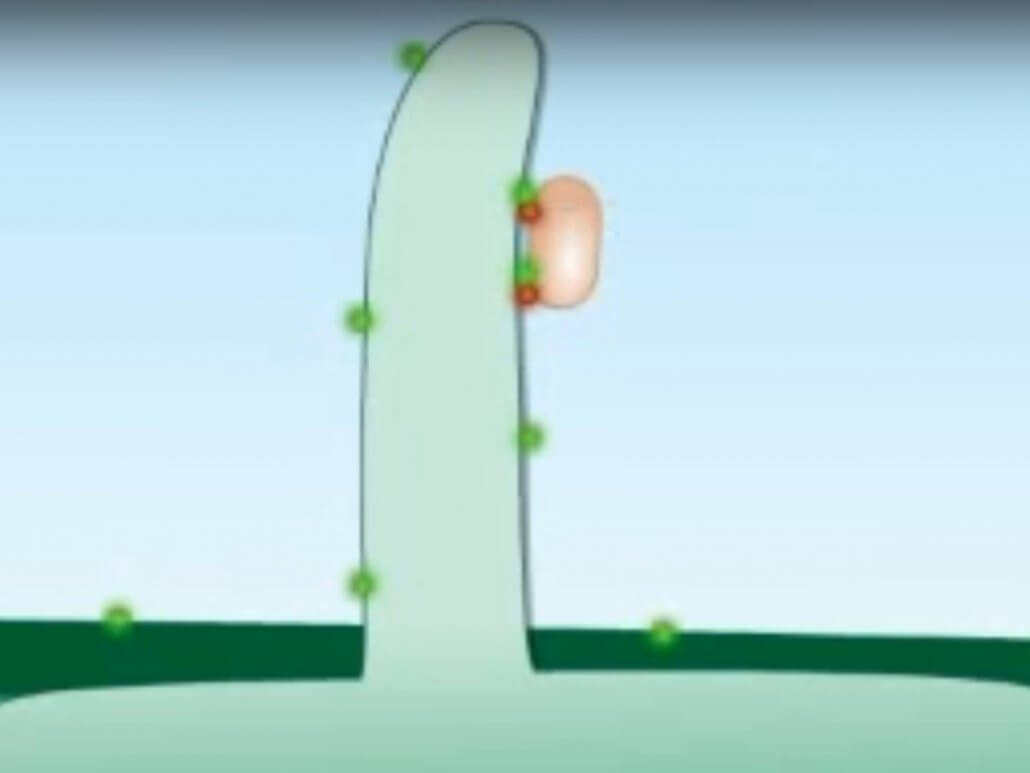

Root nodule formation
Following curling, the bacteria enter the root hair and persuade the plant to form a cellulosic tube (like a straw). This is called the infection thread which spreads down the root hair and into connecting roots. The tube is important for the exchange of nutrients creates the room needed to house the bacteria when it multiplies inside the nodule.
These tubes form threads inside the plant root which can connect with the body of the entire plant. This opens an opportunity for direct deposits of nitrogen in various parts of the plant body. This saves the plant the energy which would have been used to fetch the nitrogen from the nodules in the roots.
In some cases, it happens that the nodule will form, but the bacteria living in the root become inactive, i.e. they don’t fix nitrogen. You can identify the activity of a nodule by cutting it in half with a knife. An actively fixing nitrogen nodule will have a red coloration on the inside, while a white or greyish-green coloration indicates an inactive nodule.
What affects the activity of nodules?
I will not list all factors which affect nodule activity, but rather focus on those which are key. These factors should be considered in farm management, especially when applying nitrogen fertiliser.
Soil pH: The bacteria involved in BNF are often negatively affected by low soil pH, specifically when the pH falls below 6. In this case, lime should be added to increase the soil pH and thus increase BNF.
Soil nitrate levels: N-fixing bacteria are negatively affected by too high nitrate levels in the rhizosphere, i.e. the areas surrounding the root of the plant. High nitrate levels will cause these bacteria to remain inactive, so that the roots can use the nitrates from the soil, and thereby restore the nitrate balance within the rhizosphere. This process is driven by osmosis.
Cold climate: The activity of bacteria, like most organisms, becomes restricted by cold temperatures. N-fixing bacteria will remain inactive on any cold days, therefore throughout most of the winter. This is because the functionality of any bacteria is highly dependent on temperature. If the temperature drops below 15 degrees, in order to save energy, the bacteria will stop fixing N up until such a time as the temperature rises.
Conclusion
Nitrogen fixing bacteria in the soil provide an opportunity for farmers to tap into the huge amounts of nitrogen which are just sitting in the atmosphere, waiting to be unlocked. By planting legumes, and implementing practices which facilitate BNF, farmers can make the most of this free resource.
Sources and further reading
Rhizobium-Legume Symbiosis and Nitrogen Fixation under Severe Conditions and in an Arid Climate
Rhizobium Species, Nitrogen Fixation, Biofertilizer and Culture
Nitrogen-fixing bacteria in root nodules of leguminous plants
- The management of soils with excessive sodium and magnesium levels - 2023-06-12
- Understanding evapotranspiration better - 2021-10-18
- Soil fungi connections - 2021-09-28

